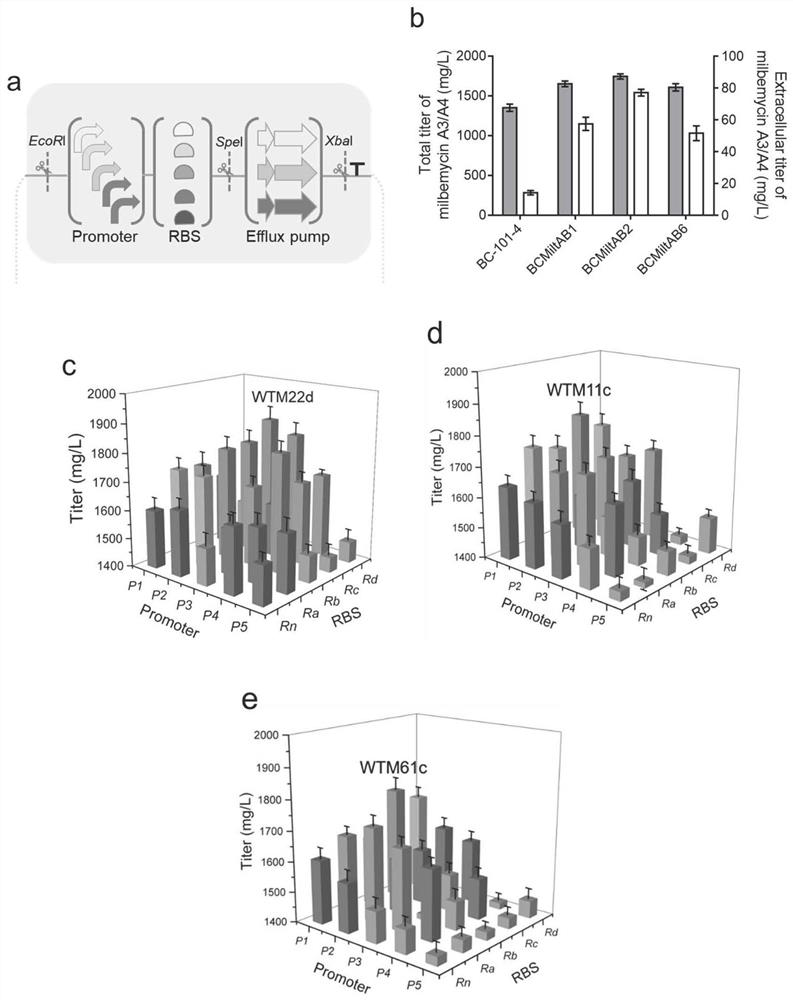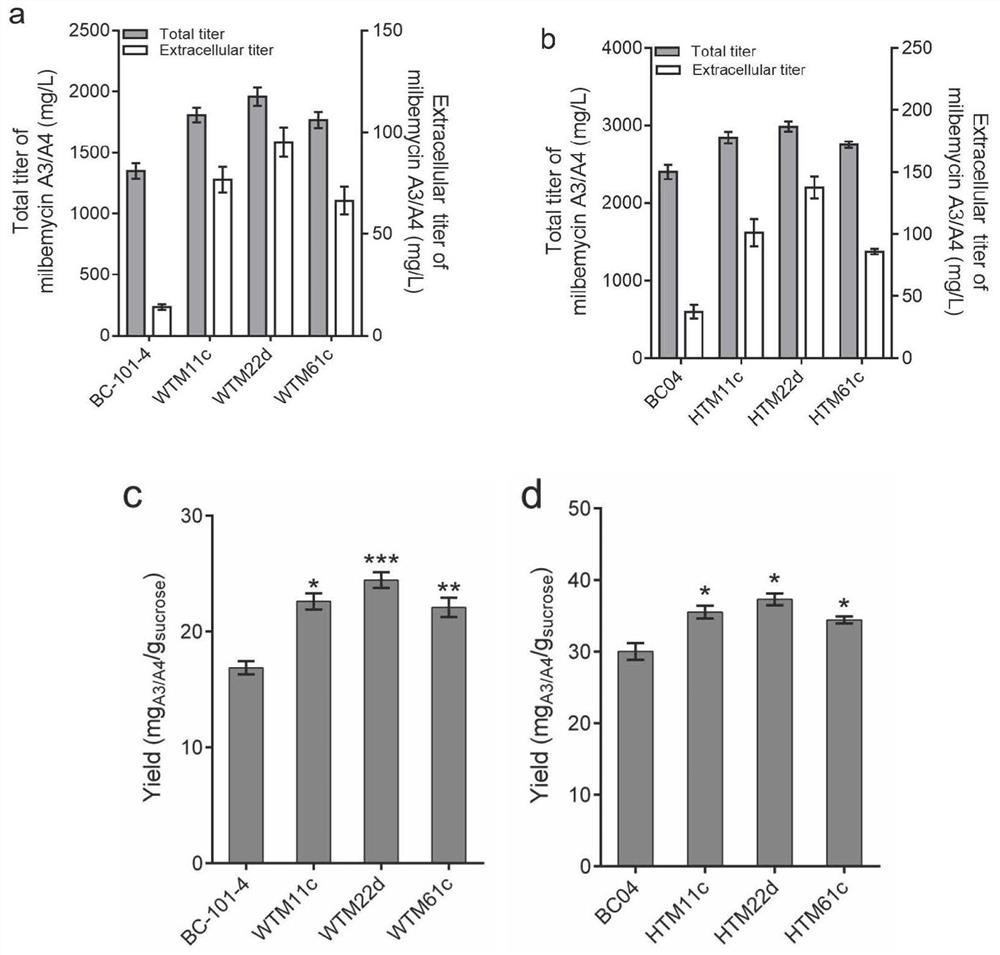Recombinant vector and recombinant bacterium for improving yield of macrolide antibiotics and application of recombinant vector and recombinant bacterium
A recombinant vector and macrolide technology, applied in the field of genetic engineering, can solve the problems affecting the growth and yield of strains, and the accumulation of antibiotics soaring, so as to reduce feedback inhibition and improve yield.
- Summary
- Abstract
- Description
- Claims
- Application Information
AI Technical Summary
Problems solved by technology
Method used
Image
Examples
Embodiment 1
[0022] 1. Construction of macrolide efflux module
[0023]Using the genome of Streptomyces glaciformis BC-101-4 as the template (the accession number on GenBank is Genome ID: CP002047.1), all related promoters and efflux genes were amplified, among which the macrolide efflux module was Components include promoters, ribosomal recognition sites, and efflux genes. The combined fragment of described promoter and ribosome recognition site is PiRj, wherein Pi is promoter P1 (sequence as shown in SEQ ID NO:1), P2 (sequence as shown in SEQ ID NO:2), P3 (sequence as shown in SEQ ID NO:2) As shown in SEQ ID NO: 3), P4 (sequence as shown in SEQ ID NO: 4), P5 (sequence as shown in SEQ ID NO: 5), Rj is the ribosome recognition site Rn (Rn is each start (5'-GGAG-3'), Rb (5'-GAAAG-3'), Rc, (5'-GAGGA-3'), Rd (5') -GGGGAG-3'), using the genome of Streptomyces glaciformis BC-101-4 as a template, using the PiRj-F / PiRj-R primer pair to amplify the PiRj fragment (i represents 1-5, j represents n...
PUM
 Login to View More
Login to View More Abstract
Description
Claims
Application Information
 Login to View More
Login to View More - R&D
- Intellectual Property
- Life Sciences
- Materials
- Tech Scout
- Unparalleled Data Quality
- Higher Quality Content
- 60% Fewer Hallucinations
Browse by: Latest US Patents, China's latest patents, Technical Efficacy Thesaurus, Application Domain, Technology Topic, Popular Technical Reports.
© 2025 PatSnap. All rights reserved.Legal|Privacy policy|Modern Slavery Act Transparency Statement|Sitemap|About US| Contact US: help@patsnap.com



